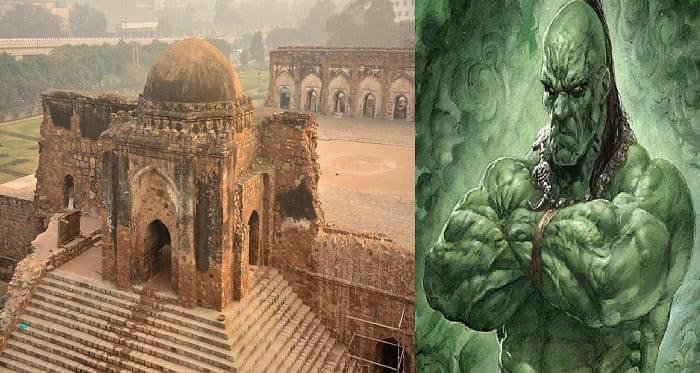Leaning temple of Varanasi - A Temple That Leans More Than Tower Of Pisa
The world of wonders, such as the wonders which are a compilation of natural and man-made structures, which surprise humans with their amazing art, structure, and beauty. In 2000, the swiss foundation decided to launch a campaign to determine the list of the Seven Wonders of the World. About 100 million people cast their votes on the Internet or by text messaging and chose the seven wonders of the world such as the Great Wall of China, Chichen Itza, Petra, Machu Picchu, Taj Mahal, Christ the Redeemer, and Roman Colosseum, the result of which was revealed to the world in 2007.
Italy's Leaning Tower of Pisa, which received World Heritage status from Unesco, was also included in the list of beautiful incredible structures, which are quite popular among humans due to their tough marble structure and incredible inclination. This inclination of the building remains its center of attraction, which is visited by millions of people every year to see how a monument is still dominating today. On the other hand, India, which is about 6500 km from Italy, is famous mainly for its beautiful temples, has a temple that stands gracefully on the banks of the river Ganges, leaning at an angle higher than the Leaning Tower of Pisa. The name of this temple is Ratneshwar Mahadev temple, also known as the "Leaning temple of Varanasi". Located near Manikarnika Ghat, it is one of the most photographed temples in the holy city of Varanasi in Uttar Pradesh. This temple is leaned about 9 degrees, which is 5 degrees more than the leaning tower of Pisa.
No one knows the real reason for the tilt of this temple, is it a structural problem or a curse? nobody knows. There has also been a big controversy about who built this temple. According to a popular legend, this temple was built 500 years ago by a servant of Raja Man Singh for his mother Ratna Bai. After the construction of the temple, the servant started spreading it proudly everywhere that he had paid the debt of his mother. However, his mother cursed the temple with bewilderment and anger that no one could repay the mother's debt. Since then the temple started leaning. This temple, popularly known as Matru-run, meaning Mother's debt, is leaning down for this reason. According to another belief, the reason for the tilt of the temple is attributed to the weight of the ghat which collapsed some years back. The temple could not handle its weight and leaned backward.
The famous English scholar James Prinsep of 1832 has carved this temple many times in his drawings and it can be clearly seen in these drawings that till that time the temple was straight and there was no sign of tilt. But the real truth is still unknown that who built this temple. According to the revenue records, the Ratneshwar Mahadev temple was built by the Queen Baija Bai of Gwalior during 1825-1830 and according to District Cultural Committee, this temple was built by Amethi royal family in 1857. In the absence of any strong evidence and amidst so many stories, this temple is still surrounded by many mysteries. The main door of the temple is half-submerged in water and priests always have to descend into the water to worship Mahadev. During the monsoon, when the water level rises, the dome of the temple also completely engulfs in the Ganga river.
The roots of the architecture of India are hidden in its history, philosophy, and culture. There are many temples in India, whose magnificence and architecture if compare with any monument in the world, then these temples will stand miles ahead, be it the Kailasha Temple in Aurangabad or Meenakshi Temple in Tamil Nadu.
































